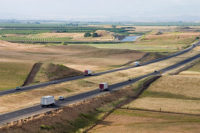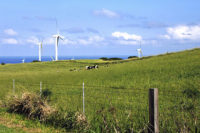Successful companies also know protecting the environment is about more than maintaining compliance with the environmental laws and regulations applicable to their operations. It’s about embracing a process of continuous improvement aimed at protecting the environment for future generations.
Tyson Foods has become a world power in protein because of its strong belief in these premises. The products we produce are second to none in food safety, quality and variety. Conservation, pollution prevention and stewardship are some of the terms used at Tyson Foods to describe our commitment to protecting and respecting the environment.
Accordingly, we regularly investigate and engage in packaging optimization projects designed to (1) ensure the wholesomeness, safety and shelf-life of our products, and (2) minimize our environmental footprint. Below we highlight one of Tyson Foods most recent packaging optimization initiatives.
Tyson Foods’ Case Ready Pork Group recently undertook a project to decrease the amount of cube (cubic feet of space consumed on a truck by the mastercase) and packaging required when storing and transporting product. Packages of fresh pork are typically enclosed in a mother bag for shipping. Mother bags provide an atmosphere that aids in maintaining product freshness.
Historically, two packages of case-ready pork were laid flat and adjacent to one another in a mother bag. With a few simple changes, we were able to decrease the footprint of the mother bag by half, by placing steak paper between the packages of pork and stacking the packages on top of one another. The steak paper allows the atmosphere to flow between the packages, thus acting as a conduit that maintains product freshness.
The decrease in the mother bag allowed us to decrease the size of the mastercase (the corrugated shipping box received by the customer). In addition, depending on the pack configuration, we reduced, and in some cases eliminated the need for, the corrugate shelves used to support the product during shipment. In one example, we could only place six packages in the mastercase; we can now place eight packages in a smaller case.
This change started a chain reaction of packaging optimization events, benefiting both our company and our customers, and resulting in the following anticipated annual reductions:
· The amount of mother bag required for product packaging will reduced by 761,472 square feet, for a total of 133,656 pounds.
· The total amount of corrugated materials needed for product packaging will be reduced by 44,688,102 square feet, thus reducing the number of inbound supply partner trucks to Tyson Foods by 248.
· The number of mastercases shipped to customers and distribution centers each year is projected to reduce by 1,489,036 cases or 21.82 percent.
· This project eliminates the need for 70,753 pallets, equaling 129 truckloads of pallets, or 5,147,317 pounds of pallets being shipped to Tyson Foods and its customers.
· The amount of truck space (cube) decreased should reduce around 3,200 trucks sent to customers while sending the same amount of weight.
At the 108th Annual Meeting of The American Leather Chemists Association, which I attended in June 2012, one of the speakers made the following statement, which I believe captures the spirit of Tyson Foods’ approach as well: “Only sustainable thinking delivers sustainable products, and only sustainable products deliver sustainable business.”
Tyson Foods considers this project not only a packaging optimization success, but also a demonstration of our commitment to sustainable and responsible social, environmental, and economic business practices.





Report Abusive Comment